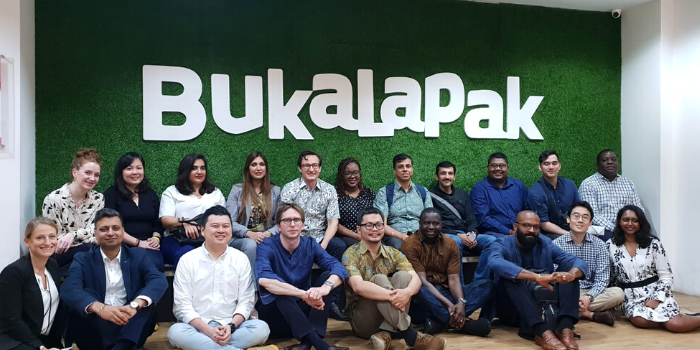Earlier this year, we published a paper exploring the potential pathways for evolving the mobile money business model. With internet and smartphone penetration in emerging markets at an all-time high, the paper seeks to clearly articulate how mobile money providers can adapt their strategy to a platform-based approach, and remain sustainable in the expanding fintech landscape.
Accordingly, a renewed ‘payments as a platform’ model encompasses technological and organisational shifts that reflect both global trends and industry needs. It involves lowering barriers for partnerships or creating a more accessible environment for third parties, moving away from one-on-one negotiations and one-off third-party integrations. It also enables a diversified revenue model, where customer fees are supplemented by additional monetisation sources from businesses and governments. All of this ultimately unlocks more targeted services for individuals, businesses and communities— spurring a more engaged user base for the providers.
Underpinning the need for this shift is the impact of mobile money on households globally. Processing over $1.3 billion a day, the mobile industry is facilitating financial access to the underserved in emerging markets, catalysing a breadth of socioeconomic gains. Evolving the mobile money business model ensures a continuation of such outcomes. In less developed markets, mobile money is far more accessible than app-based platforms, particularly outside of urban centres, and is driving progress in financial inclusion more broadly.
Mobile money providers are already seeking to make this transition. To further expand on the ‘payments as a platform’ journey, we recently took a group of our members to Indonesia on a five-day ‘Live Learning’ experience facilitated by Caribou Digital. Members included leaders in mobile financial services from various markets in Asia and Africa, representing Tigo, Wave Money, Mynt (Globe Telecom), Airtel, MTN, EcoCash, Valyou, Mobitel and Jazz.
Our decision to travel to Indonesia specifically was two-fold:
Firstly, the country presents a significant learning opportunity given its impressive progress in its digital payment ecosystem, with 34.6% of all adults receiving or making digital transactions in 2017, compared to 22.4% in 2014. A confluence of factors is paving the way for the ubiquitous adoption of fintech and internet platforms, including; a growing middle class, an increasingly tech-savvy youth population and a regulatory environment encouraging innovation and entrepreneurship. Indonesia is now home to the most billion-dollar tech start-ups in Southeast Asia (including Bukalapak, Go-Jek, Tokopedia, and OVO), boasting a range of e-commerce, ride‑sharing, media distribution, and financial services.
Secondly, despite recent progress in its financial inclusion rates, Indonesia nevertheless hosts the fourth largest unbanked population globally, with 95 million adults still lacking a formal account at a financial institution or with a mobile money provider. As such, we were equally curious about the extent to which platforms are engaging with traditionally underserved and cash-reliant segments, including bottom-of-the-pyramid populations and last-mile, rural communities.
With this in mind, our trip included meaningful engagement with leading companies in the payments and e-commerce spaces at their headquarters in Jakarta. This included Bukalapak, Gojek, Ovo, Grab, Dana and Tokopedia, among others. Our Members posed tough questions around product diversification, merchant and agent engagement strategies, interoperability, frictionless third-party integration and user experience.
We were fortunate to engage in interactive experiences with consumers and small businesses who use digital services across the city’s bustling markets. In Yogyakarta and East Java, an hour-and-a-half flight from Jakarta, we witnessed how mom-and-pop store owners are deploying different e-commerce platforms and payments products to diversify their revenue streams and add value to their shops. taking stock of which lending and investment products they found most useful from platforms such as Crowde and OVO.
We became immersed as digital users ourselves. We loaded our own digital wallets, choosing from some of Indonesia’s thirty-nine wallet providers and competing promotions, to experiment with different apps and services. We purchased items for deliveries from ride-hailing apps, explored QR code-based payments and some of us experimented with mobile spa therapists.
Our holistic experience of Indonesia’s leading tech companies, urban markets and last-mile shops offers enlightening insights on what’s working, what’s not, and why. Notably, our learnings are informing what’s most relevant and applicable for our members as they take the leap to a ‘payments as a platform’ approach.
In the coming weeks, we will publish a short series of blogs highlighting our key reflections and insights as we deep dive into pressing themes on the topic of ‘payments as a platform.’
Receive the latest insights on mobile money straight to your inbox by subscribing below.




